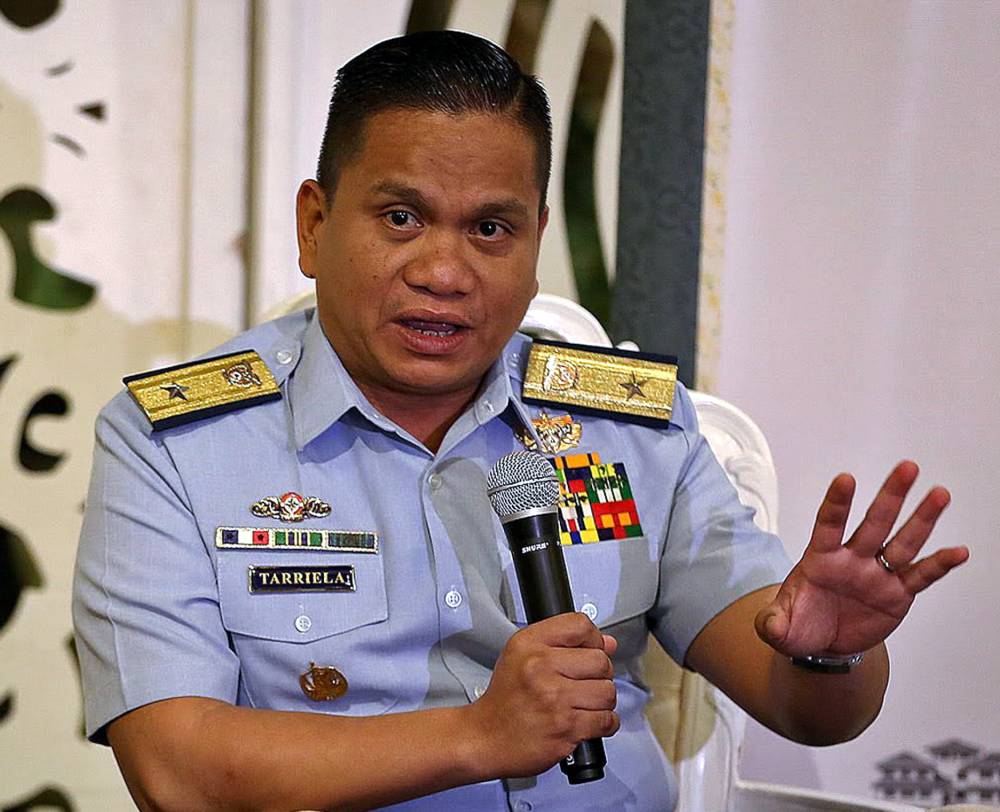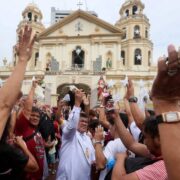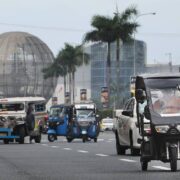Hospital ship now among Sino vessels in WPS–PCG

PAG-ASA ISLAND, WEST PHILIPPINE SEA—A hospital ship and a rescue vessel are among the latest Chinese vessels seen at Escoda (Sabina) Shoal in the West Philippine Sea as tensions re-escalate between Manila and Beijing after a China Coast Guard (CCG) ship rammed two Philippine Coast Guard (PCG) vessels early this week.
A CCG ship, with bow number of 4303, and at least 24 Chinese maritime militia vessels were also seen at Escoda, the PCG said on Thursday.
Speaking to reporters here, Commodore Jay Tarriela, the PCG spokesperson for the West Philippine Sea, said China was increasing its presence at Escoda “because they believe the BRP Teresa Magbanua will be staying at Escoda Shoal for good.”
The PCG identified the Chinese rescue vessel as “Nan Hai Jui.” PCG officials did not provide additional information on the Chinese rescue vessel and the hospital ship, including details on their arrival at Escoda.
Aside from the Chinese ships, four Vietnamese fishing vessels were also seen in the vicinity of the shoal.
Escoda, about 139 kilometers west of Palawan province, serves as the meeting point or staging area for the government’s rotation and resupply missions to the grounded BRP Sierra Madre, which serves as Manila’s military outpost in the West Philippine Sea.
The 97-meter BRP Teresa Magbanua, the PCG’s largest and most modern vessel, has been stationed at Escoda since April 18 in response to the presence of Chinese militia vessels and suspected reclamation activities there.
In response, China sent its largest coast guard ship to Escoda to counter the presence of Magbanua.
The 165-meter CCG ship, the largest coast guard vessel in the world and nicknamed “The Monster,” dropped anchor at Escoda on July 3.
China’s monster ship left the shoal on Aug. 10 but was replaced by the 135-meter CCG 5903.
Accusation
Last week, China accused the Philippines of constructing a “forward deployment base” at Escoda with the prolonged deployment of Magbanua there and with the supposed deployment of a second PCG vessel in the area.
“Their suspicions about the Philippines engaging in such actions stem from their own pattern of unlawfully occupying maritime areas in the South China Sea, followed by illegal reclamation and provocative militarization of those features,” Tarriela said earlier.
China claims sovereignty over almost the entire South China Sea, deploying coast guard vessels to protect what it considers its territory. An international arbitral tribunal has said Beijing’s claim has no basis under international law.
On Aug. 19 near Escoda, a CCG vessel rammed two PCG ships, causing “structural damage” to both Philippine vessels.
The BRP Bagacay had a 0.91-meter (3-foot) hole in the auxiliary room on its port (left) side and another 0.3-meter (1-foot) dent on its starboard (right side) quarter while the BRP Cape Engaño had a 1.1-meter hole on its starboard and 40-centimeter damage to the engine exhust also on the starboard quarter.
Tarriela said this was the “worst” damage sustained by a PCG ship after being rammed by a Chinese vessel.
The Armed Forces of the Philippines on Tuesday said 129 Chinese vessels were tracked from Aug. 13 to Aug. 19 across the West Philippine Sea, or the waters spanning the Philippines’ exclusive economic zone in the South China Sea. Of these, 98 were from the Chinese maritime militia, 18 from the CCG and 13 from People’s Liberation Army Navy (PLAN). This number is higher from the 92 vessels seen there a week earlier.
Shadowed by chopper
On Thursday afternoon, a Chinese Navy helicopter hovered above two vessels of the Bureau of Fisheries and Aquatic Resources (BFAR) ship conducting a maritime patrol at sandbars off the Philippine-occupied Pag-asa (Thitu) Island.
The PLAN’s helicopter, with tail No. 57, hovered above BRP Datu Sanday at least 10 times at a distance of 100 meters while the vessel and another BFAR ship were conducting patrols at Pag-asa Cays 1, 2, 3, 4 around 12:50 p.m.
The Chinese Navy helicopter, which was believed to have lifted off from the nearby Chinese-occupied Subi (Zamora) Reef, stayed for almost an hour.
The Inquirer was aboard the BRP Datu Sanday.
A Chinese maritime militia vessel, with bow number 00118, also made dangerous maneuvers, coming as close as 50 meters to BFAR’s BRP Taradapit while the latter was conducting maritime patrols in the area.
At least 18 Chinese maritime militia ships were within viewing distance while a CCG ship (5103), which sent two rigid hull inflatable boats toward the BFAR ships, was in the vicinity.
The crew onboard the BRP Datu Sanday told the Chinese ships through radio challenges to “stay clear of our route” but the crew from the Chinese ships maintained they had sovereignty over the area. INQ





















